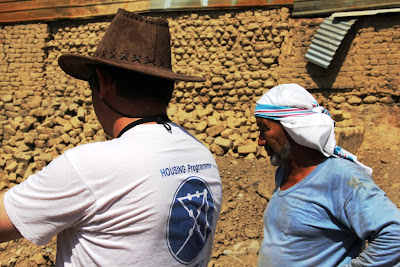The history of Kyrgyzstan runs as deep as the valleys in the Tien Shan.
From the domestication of the apple over 10,000 years ago, to the rampant expansion of Islam, and to Marco Polo’s adventures along the Silk Road.
Kyrgyzstan has been at the epicentre of cultural and social transformations from the East and the West.
An Islamic ‘lite’ country, visited by Solomon himself, which is unlike any other.
 |
| Islamic minarette in Uzgen |
Modern history bubbles on the surface.
It’s on every street corner, it’s in every house.
When the country fell to Socialist Soviet Republic in the early 20
th century, it quickly started losing it’s identify and adopting a new one.
The nomadic ways of the Kyrgyz started being melded with the urban Russians and the neighbouring Uzbeks.
United they served the Proletariat, the State, and Lenin.
 |
| Statue of Lenin in the centre of Osh city. |
And as the Socialist Experiment fails, the boundaries of autonomous regions that intended to ensure there was no clear majority become the boundaries of new States sent out by their Mother Country to be independent countries.
It surprises no one that these fragile and newly industrialising states struggle to quell the ethnic tension.
And in June 2010, Southern Kyrgyzstan, the melting pot bubbles over: four days of rampant inter ethnic violence ensues, and the damage is done. Two thousand houses, hundreds of lives, and unenviable level of social destruction through the half a million internally displaced people.
While the emergency is over for now, the reconstruction and development continues.
 |
| All that remains is rubble from this house, ransacked and burned |
How does one rebuild a life? Mallow let’s us know where to begin, with the foundations. The first foundations of hundreds of houses we are building are being laid now. It has taken a long time for us to get to this point: communities not wanting to return for fear of further uprisings, provision of temporary shelters, beneficiaries needing to prove they are fair dinkum, designs for hundreds of houses needing approvals through Government mechanism, and etcetera. But the show has begun, and it is a race against time. In six month, this country will have ground to a halt. Everything will be frozen over. Nobody will be able to construct a house, and nobody will survive without a roof over their heads with solid walls holding it up. So for now, we turn up the heat and push through.
 |
| Digging trenches for the foundations |
The challenges we face are immense. Building 500 houses across two Rayons requires a lot of attention and planning, and a heck of a lot of elbow grease and doing. Our engineers are on site daily inspecting houses and providing technical advice. Our supervisors are inspecting over 100 trucks per day delivering rocks, gravel, sand with rocks and gravel, nails, screws, wood, door, wiring, you name it. Our logistics team is the most overworked of the lot, send and receiving RFQ, BOQs, CNs, and tenders. Finance is awash in contracts. Administration is filing everything, Human Resources is dealing with everyone, and foundations keep being laid everyday.
 |
| Technical officers supporting beneficaries' housing construction |
It’s hard work. Sweat drips from every brow. Beneficaries are knackered. Our staff are knackered. I am knackered. Our knackers are knackered. But sometimes all it takes is a slice of watermelon for everything to be ok.
 |
| Plump watermelons litter the countryside, a refreshing break during a hot days work |






No comments:
Post a Comment